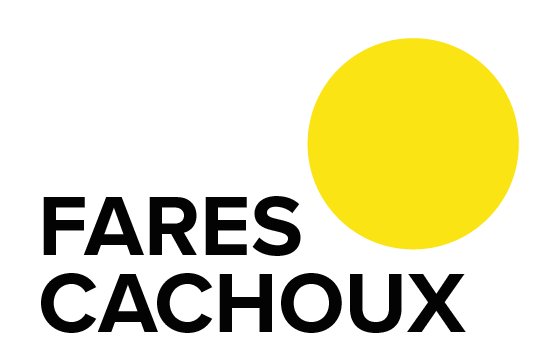Art can highlight the contradictions and dysfunctions of contemporary society, confronting us with both reality and with ourselves. When the artist provokes this confrontation with humour, our laughter is then a sign of a dialogue initiated. Here is the challenge of the series Eye to Eye.
For nearly 10 years, Fares Cachoux lived in the Gulf, working for museums in the United Arab Emirates and Qatar, observing a world of black-and-white clothing – the feminine niqab and the masculine thobe, masculine), he questioned the functioning of traditional societies. Eye to Eye references the only visible part of a woman behind her niqab, and the only access one has to a person as a unique individual and not as an interchangeable number within a faceless group of people.
Pop colours and a lightness of palette characterise works which nevertheless raise profound questions inherent to all modern societies in search of a balance between local traditions, consumer society and unbridled globalisation.
Cachoux questions the role of the patriarchy in the Middle East and its fractious relationship to the West, as well as the state of basic communication between people. The niqab, for example, reveals the difficulty of a simple, authentic and effective connection with a person whose face or expressions we cannot see. This is pertinent also in the wake of the Coronavirus pandemic, when compulsory masking affected many of our social interactions.
Finally, Cachoux asks us to consider the niqab as both mask and as costume, a uniform which, whether religious or professional, also raises the nebulous question of hidden identity. What does a costume reveal about us and what does it hide?
What if, in the case of the niqab, what it hides is in fact the complete opposite of the rigour, austerity, and sense of anonymity that it conveys about its wearer? The veiled women in Cachoux’s works are triumphant motorcyclists, Marvel heroines and indomitable rockers, each expressing in turn their playfulness, their strength and their desire for freedom, embodying in this meeting of worlds the complexity and paradoxes of contemporary Gulf societies.
Haya, 2023
Al Waleema, 2023
Sara, 2017
Dana, 2017
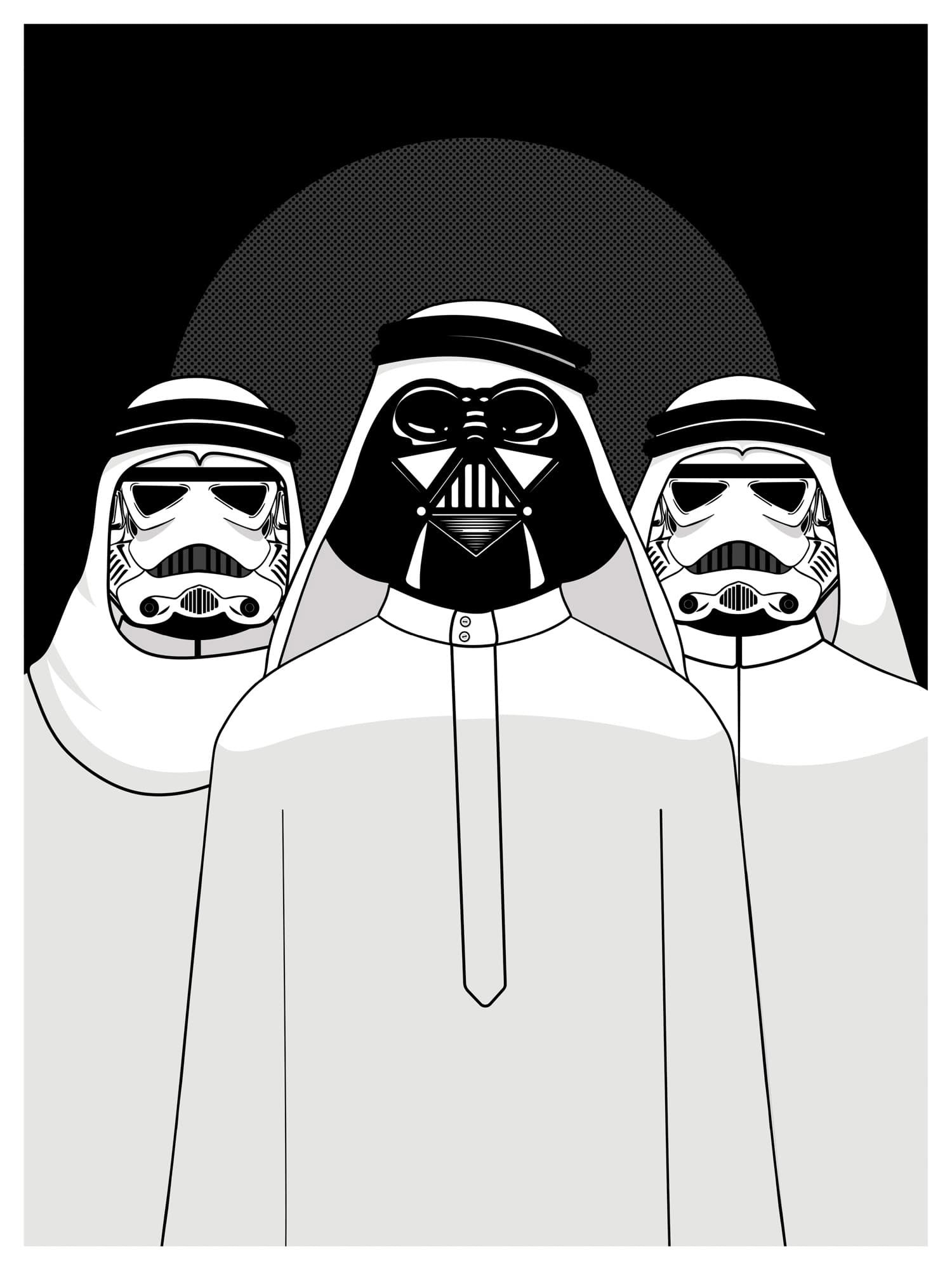
Salem & friends, 2018
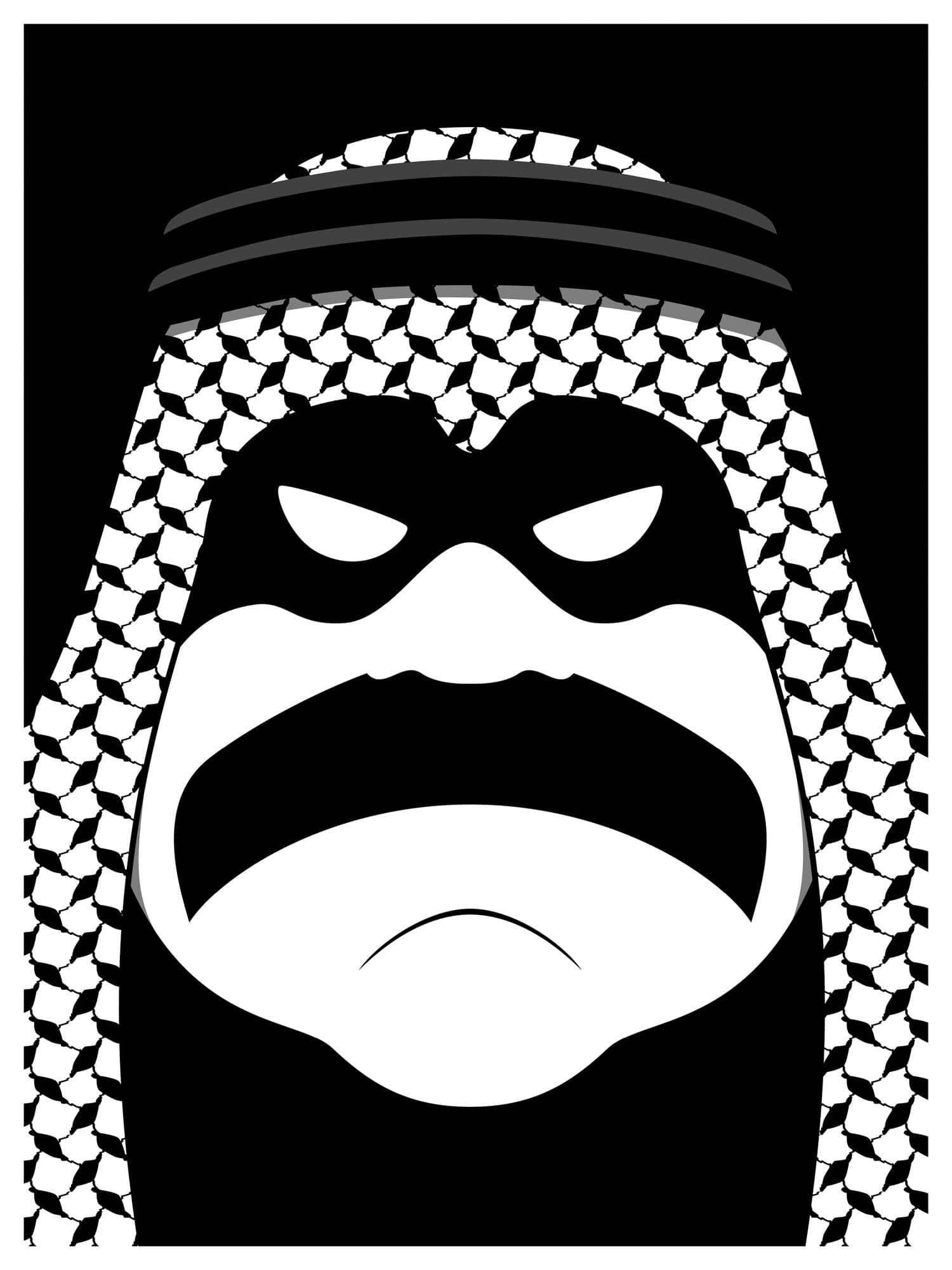
Abdul Aziz, 2017
Maryam, 2017
Hessa, 2019
Aziza, 2017

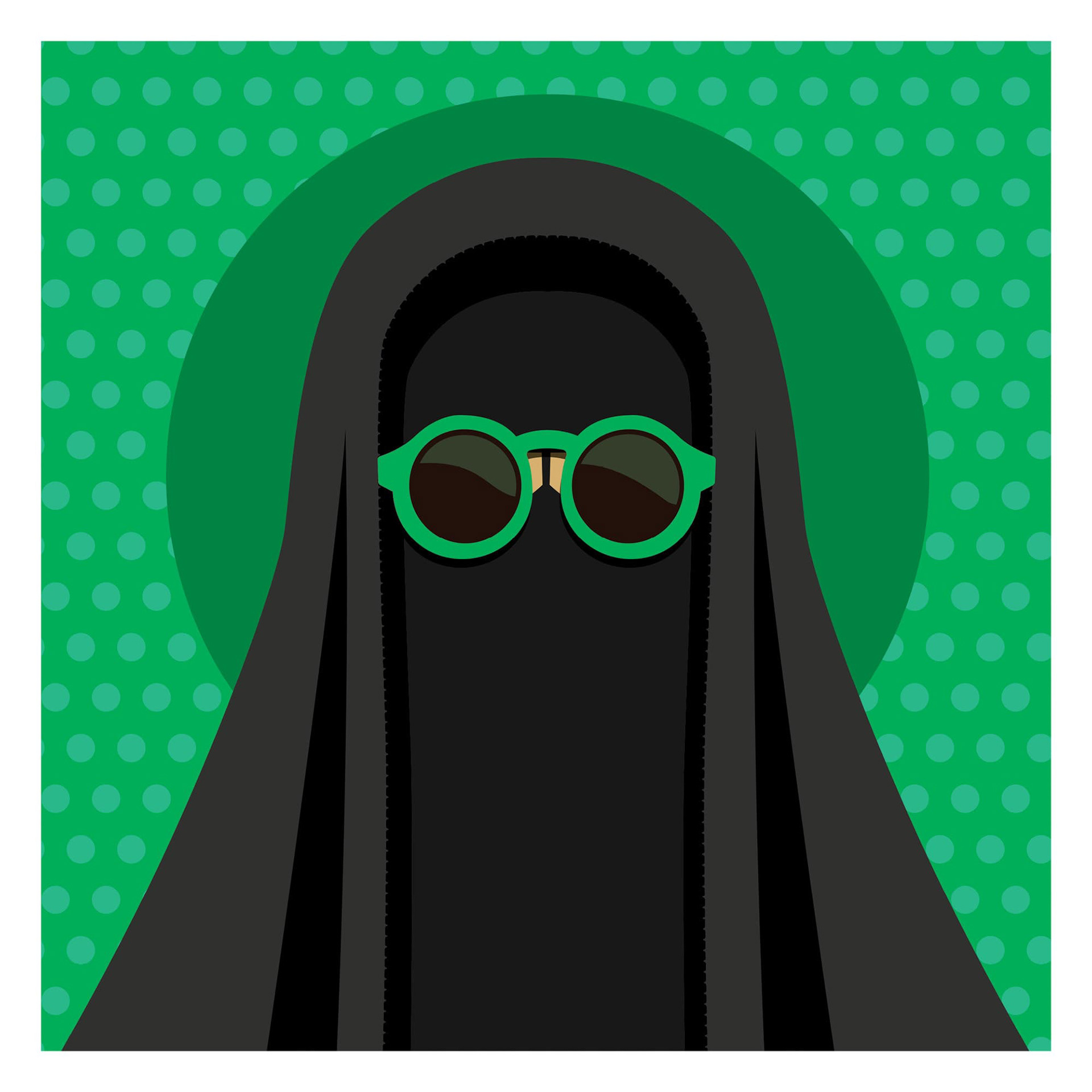

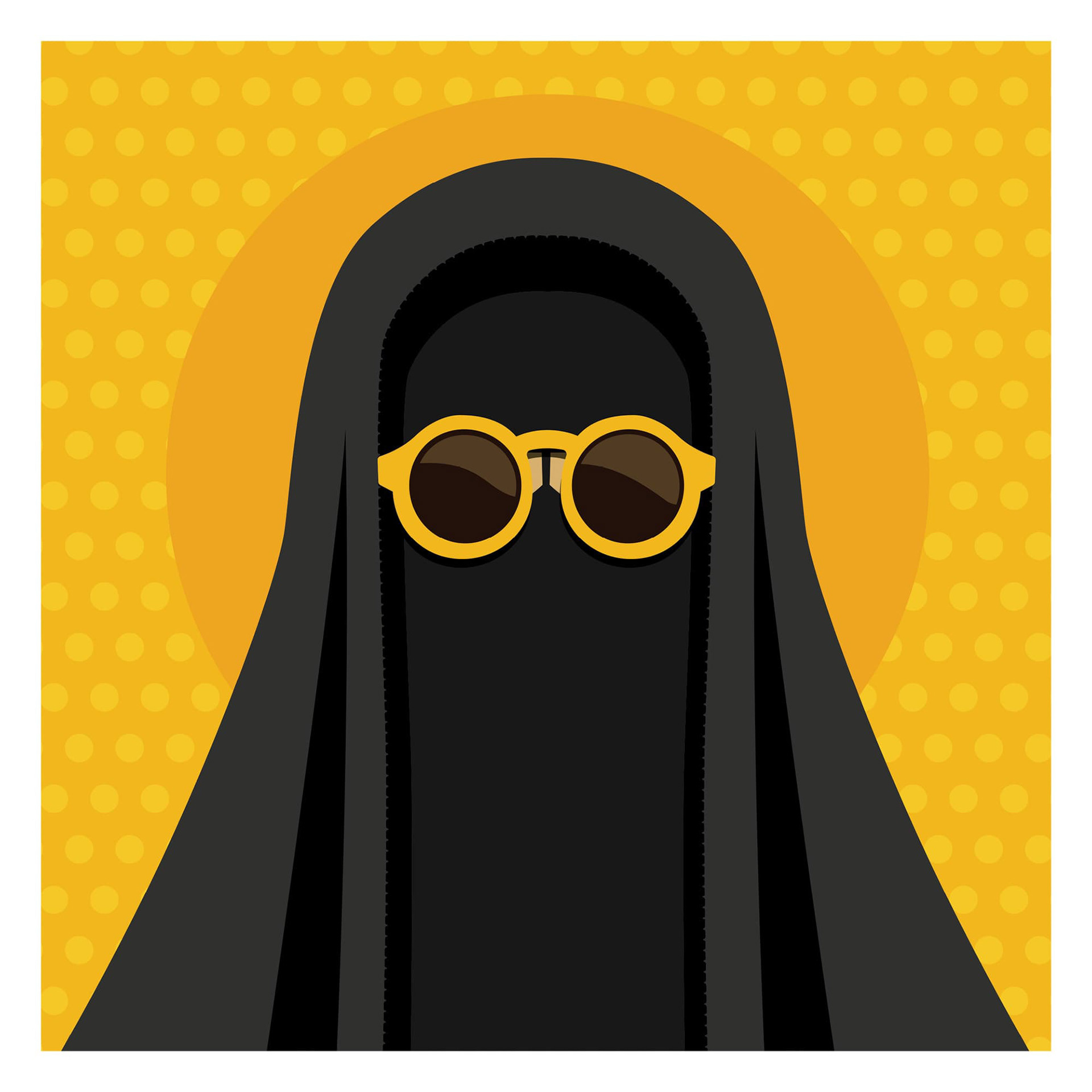
Fatma, 2019
Al Anood, 2018

Fatma, 2019

Fatma, 2019
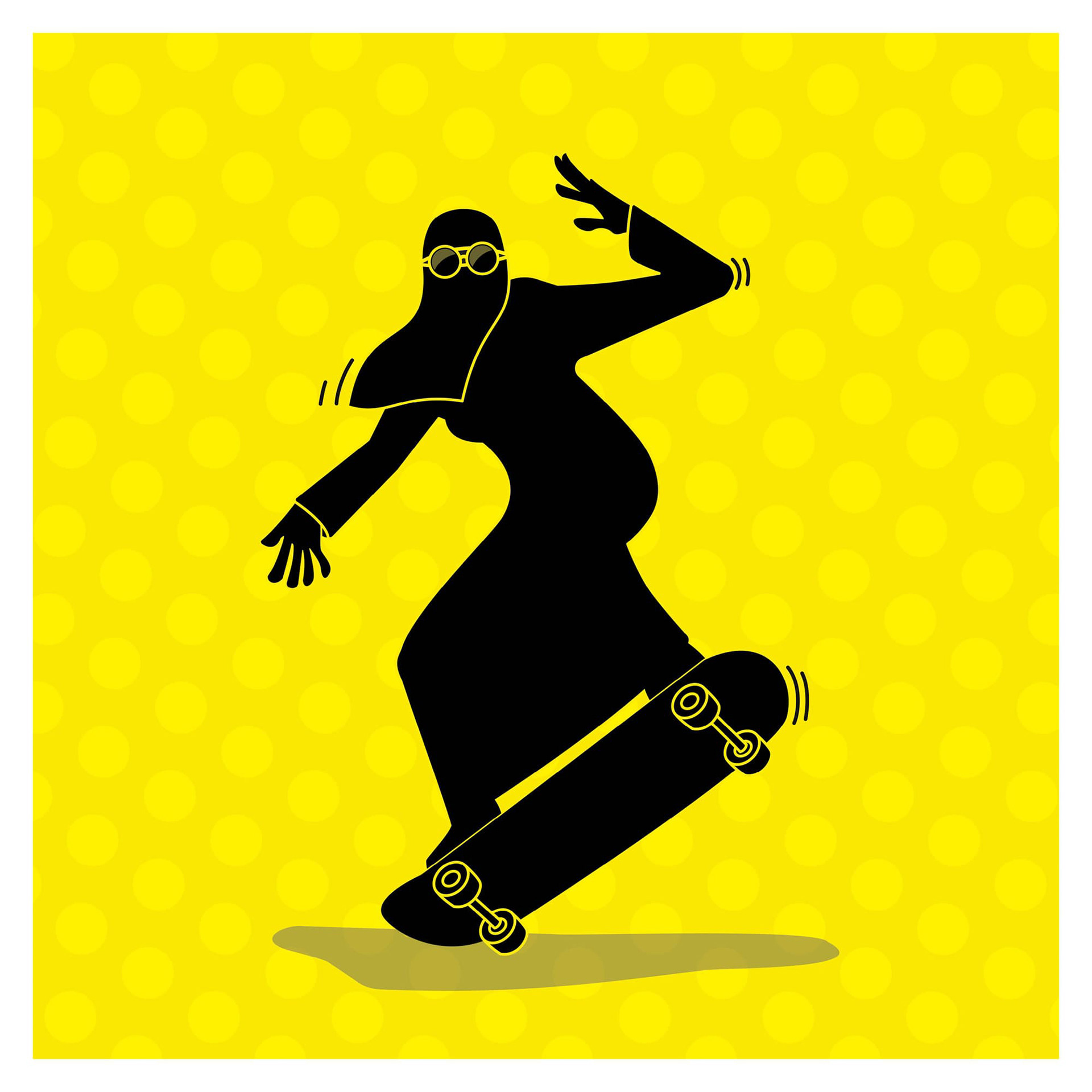
Fatma, 2019
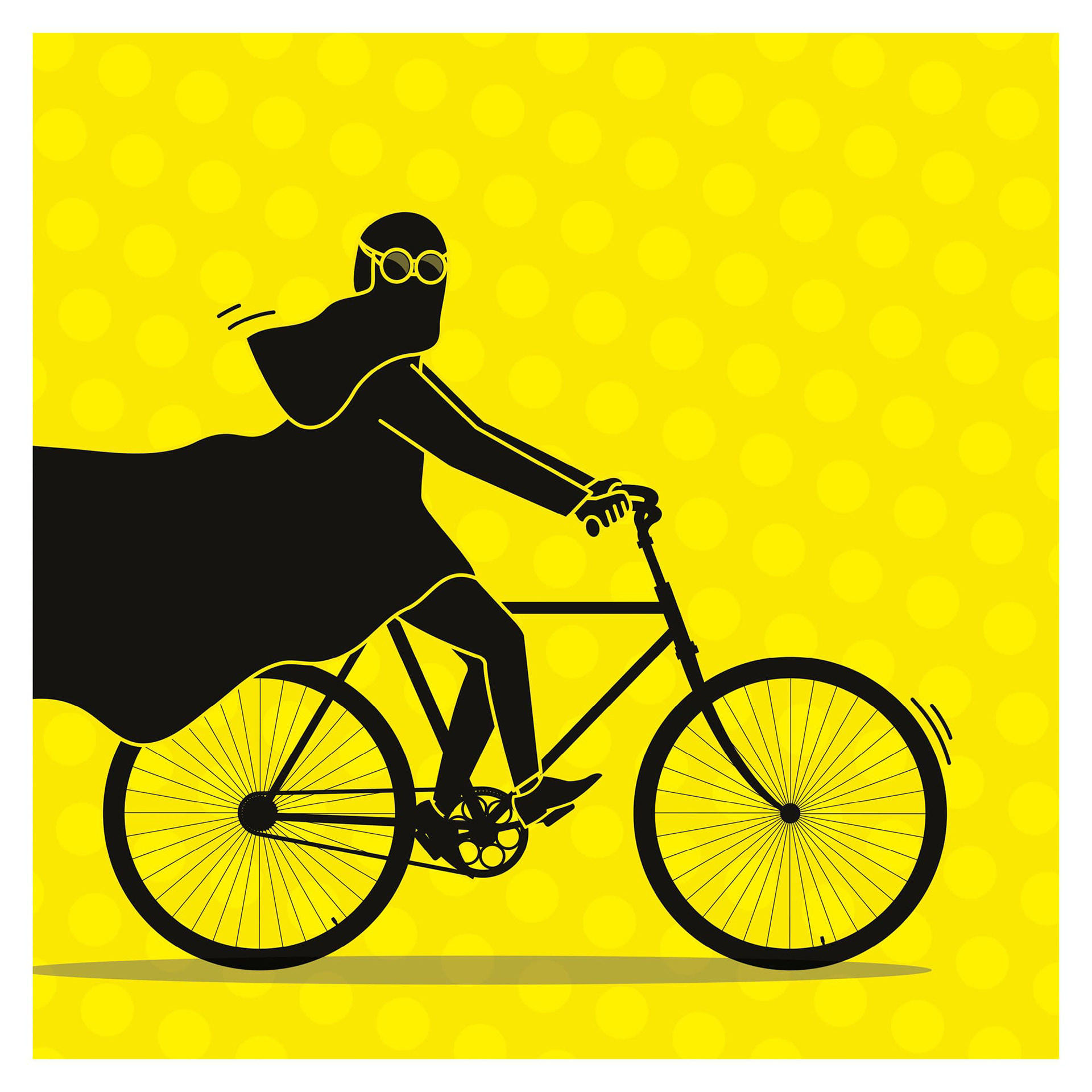
Fatma, 2019
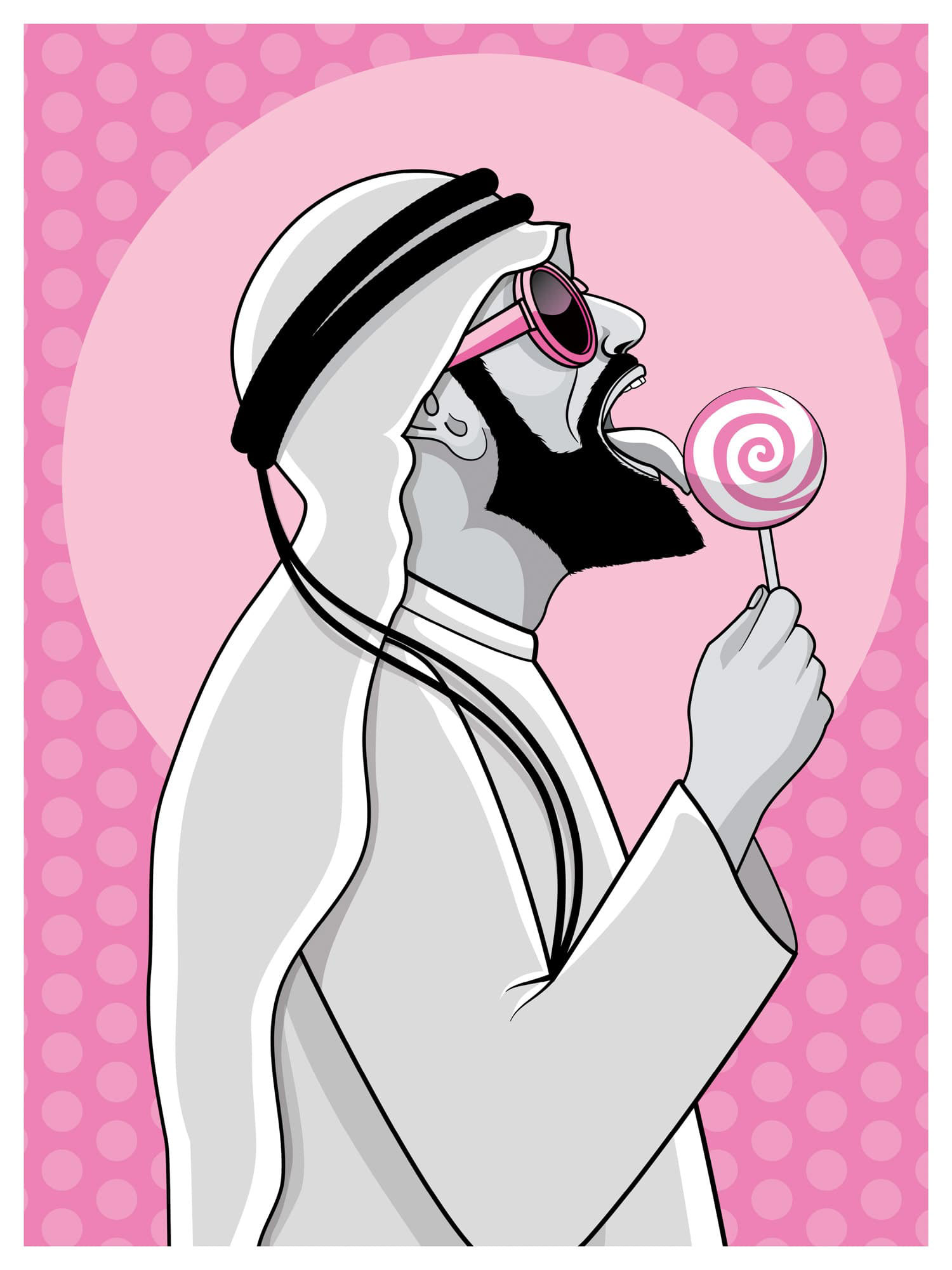
Nasser, 2016
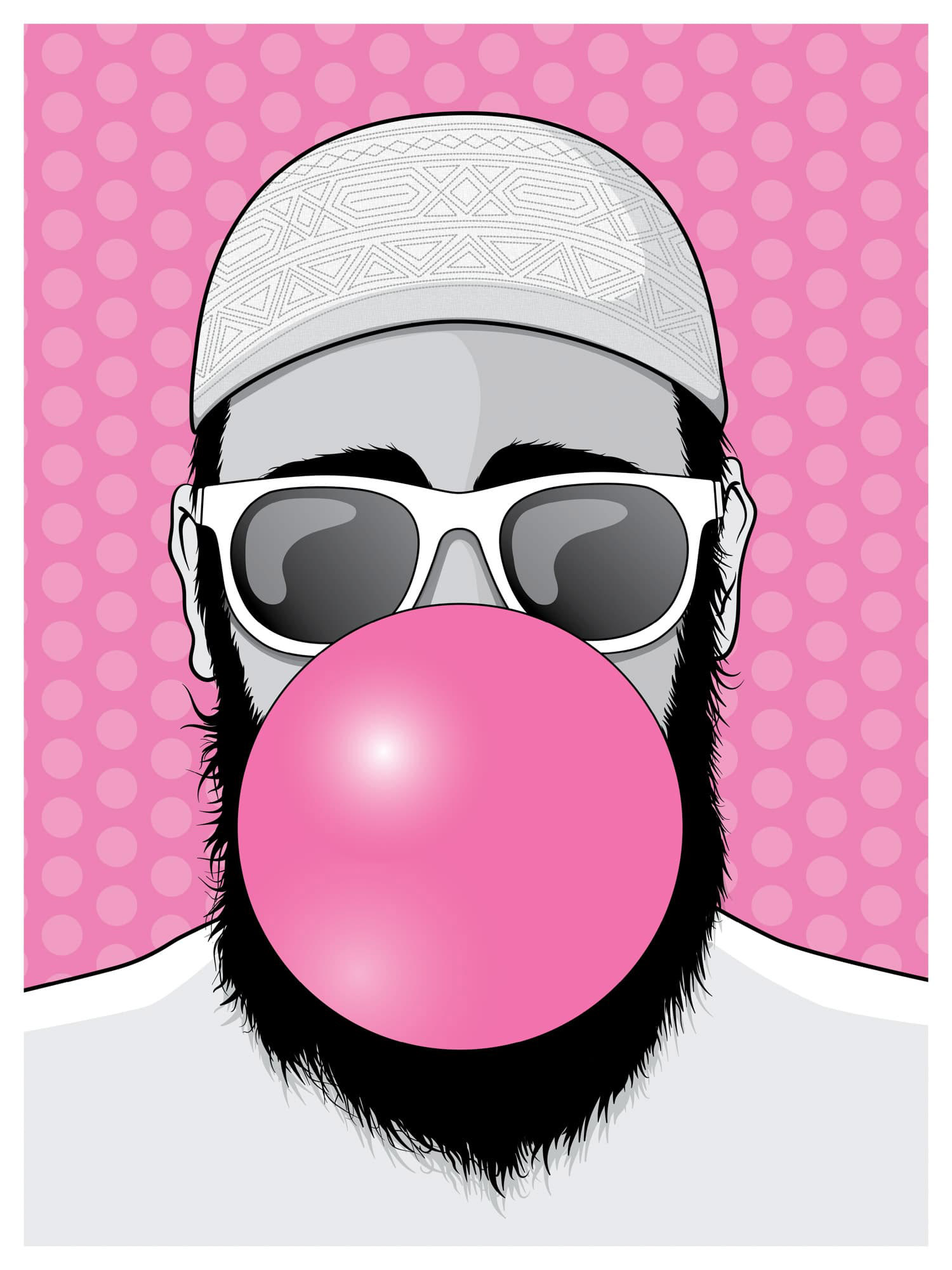
Khaled, 2016
I'm Here, 2018
Fadwa, 2020
Kholoud, 2018
Maram, 2022
